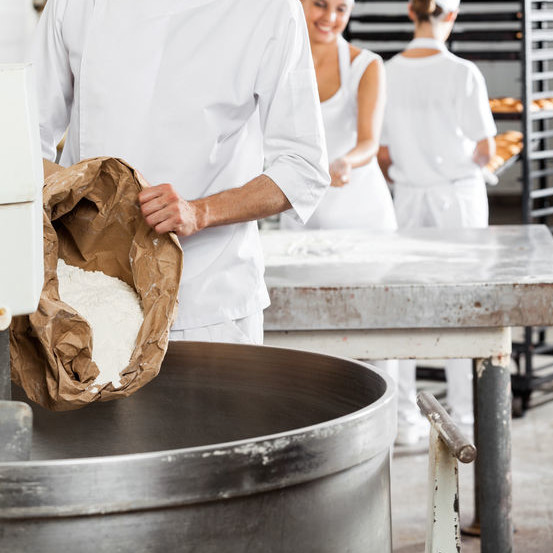
Operational Methods
What are operational methods?
Operational methods address the practices that personnel in a food manufacturing facility follow to prevent food safety issues. They provide the guidelines for a program that will reduce the risk of cross-contamination.
Cross-contamination can occur when employees move from one area of production to another, or when materials and utensils are not color-coded and segregated, labels are not accurate, or the rework procedure is not followed correctly. The FDA guidelines for Good Manufacturing Practices (GMP’s) require that all food received by manufacturers be protected from contamination.1 The program should include the following:2
- Label control
- Rework handling
- Identification and handling of scoops, containers, and utensils
- Transfer and handling of materials
Origin
In 1969, the FDA designed the current GMP regulations to help ensure the safe and sanitary manufacturing, processing, and holding of food for human consumption.3
Regulatory compliance
Operational methods can be found under the FDA’s guidance in 21 CFR part 110, entitled “Current Good Manufacturing Practice in Manufacturing, Packing, or Holding for Human Food.”4
Relevance
When establishing operational methods, focus on the four key areas: label control, rework handling, identification and handling of utensils, and transfer and handling of materials. Putting the methods in place will reduce the risks associated with cross-contamination.
Label control
Ingredients used in a food product must be declared on the label. During manufacturing, a label control program will cover the following:1
- Confirmation of correct labels upon receipt
- Label confirmation at time of use
- Security measures for obsolete labels
Rework
Rework is defined as a product that is unadulterated food that has been removed from processing; it is sanitary and suitable for use as food.[5] Examples of rework are pastry scrap, day-old bread used in the production of croutons or stuffing, or dough. It is important that only like products are used together to avoid cross-contamination or introduction of allergens. Rework should be included in a traceability program.
Identification and handling of scoops, containers, and utensils
Having a system in place to ensure that the correct scoops, containers, and utensils are used will greatly reduce the risk of product contamination. Color-coding can be used to identify tools with the type of use in the bakery.
Examples of color-coding for containers and utensils:1
- White: Ingredient (non-allergen)
- Gray: Trash
- Yellow: Sanitation
- Blue: Recycling
- Green: Allergen
Transfer and handling of materials
Moving materials around a manufacturing facility can allow opportunities for contamination. Materials such as ingredients, work-in-progress, and finished goods should be part of an operational method procedure.
Stored materials may need to be sampled by QC before use in manufacturing. Sampling of materials must be done in accordance with a defined sampling protocol that includes sanitation of sampling tools, marking of compromised containers, and resealing.1 The most common storage containers are bags, boxes, pails, and drums. Protocols should be established for each type of container.
References<
- Gall, K. “Good Manufacturing Practices and Training.” Food Safety Magazine, 2008, https://www.foodsafetymagazine.com/magazine-archive1/octobernovember-2008/good-manufacturing-practices-and-training/
- AIB International. “Operational Methods.” Food Safety and Sanitation Distance Learning Course, Chapter 11.
- Center for Food Safety and Applied Nutrition. “Current Good Manufacturing Practices (CGMPs) – Food CGMP Modernization Report.” U.S. Food and Drug Administration Home Page, Center for Food Safety and Applied Nutrition, www.fda.gov/Food/GuidanceRegulation/CGMP/ucm207458.htm.
- US Government Publishing Office. “21 CFR 110 – Current Good Manufacturing Practice in Manufacturing, Packing, or Holding Human Food.” 1 Apr. 2016, https://www.gpo.gov/fdsys/granule/CFR-2016-title21-vol2/CFR-2016-title21-vol2-part110
- Evans-Lara, A. “How to Manage Food Rework in Your Business.” HACCP Mentor, 9 May 2017, https://haccpmentor.com/gmp/manage-food-rework/

